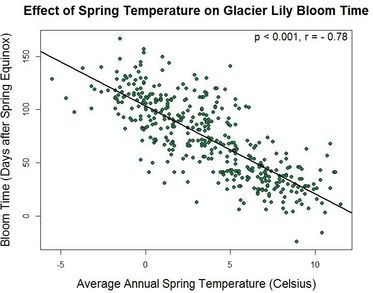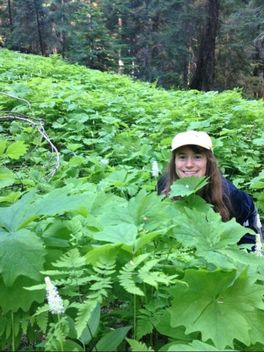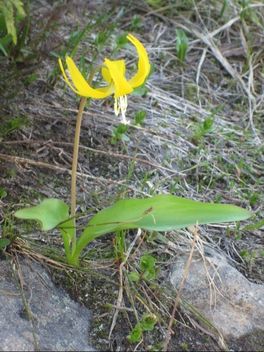
My name is Kyra Kaiser, and I am an undergraduate assistant helping Dr. HilleRisLambers with her
fieldwork this summer, and I have seen some of you on the MeadoWatch trails! I am an undergraduate at
University of Washington, and I recently finished a research project studying one of MeadoWatch’s focal
species, Glacier lily. I hope that you have seen Glacier lily if you have been out on the trails lately! This
plant is found at high elevations and blooms in brilliant yellow soon after snowmelt (see picture above).
After spending so much time researching Glacier lily, I was thrilled to meet my study species in person on
Mount Rainier!
Our lab (the HilleRisLambers lab) is particularly interested in nontraditional sources of data, such as data
that is gathered by all of you volunteers. I studied another underutilized source of data for studying
phenology, herbarium specimens. Herbarium specimens are plants that are collected, often during bloom,
and preserved for research purposes. I used data on Glacier lily specimens collected across the Pacific
Northwest from 1907 to 2015. I retrieved my data from the Consortium of Pacific Northwest Herbaria, a
group of herbaria in the Pacific Northwest that make information on their specimens available online. Some
herbarium specimens in their collection date back to the late 1800s! Check out their website to see some
impressive images of old pressed plants!
Using a climate model, I obtained information on temperature and snowfall based on the collection year
and location of where each Glacier lily specimen had been collected. Then, I analyzed the effects of different
factors on the bloom time of Glacier lily. I estimated bloom time based on the date that a flowering specimen
was collected. In the graph below, each dot represents one Glacier lily specimen (i.e. an observation of
Glacier lily flowering). I found a strong relationship between the spring temperature of the specimen
collection location and the flowering time of Glacier lily. Glacier lily blooms earlier in years with warmer
spring temperatures.
If you pay attention to weather and flowers, this
relationship might be intuitive. Warmer spring
temperatures lead to earlier snowmelt, which
allows early blooming flowers to pop up sooner.
This trend has been confirmed by several studies
(and MeadoWatch data!). However, since
herbarium specimens are infrequently used as
a source of data, I wanted to test if my results
matched widely accepted trends. This would
allow me to identify any hidden errors or internal
biases present in herbarium specimen data as
well as learn about the benefits and drawbacks
of using this source of data. I discovered that
herbarium specimen data does have some
problems (e.g. missing and inaccurate specimen
collection locations), I concluded that this source of 100+ years of data has a lot of potential if these
obstacles are overcome.
I hope that you and I will see more studies on herbarium specimens in the years to come!
Best wishes,
Kyra Kaiser


 RSS Feed
RSS Feed